Pilling - the formation of small pile balls on the surface of knitted, woolen, synthetic and semi-synthetic products. Some fabrics with slightly twisted fibers are prone to rolling due to friction of the fabric during wear or washing.
In this article, we will talk about how to choose a fabric with minimal pilling and prevent the formation of lumps, as well as how to get rid of pellets that have appeared on the surface of clothing.
What are pellets and how are they formed
Unlike natural woolen products, on the surface of which pellets form only at the initial stage of the socks, synthetic and mixed fibers tend to persistent pilling, which is practically impossible to remove. Large balls appear on a woolen sweater, scarf or blanket, but they are easy to remove without risking damage to the product.
On synthetic fabrics, which are highly resistant to repeated deformations, the removed pellets are quickly replaced by new ones. The fabrics most susceptible to pilling are synthetic compounds based on nylon and lavsan fibers.
Long, smooth and very strong fibers, resistant to repeated deformations, despite their positive characteristics, also have a negative property: they quickly stretch to the surface, where they fluff and roll into very stable balls.
Fibers that are unstable to multiple deformation are the least prone to pilling.
The ability to form fibrous balls is greatly influenced by the thickness and cross-sectional shape of the fibers. Knowing the weak side of synthetic fabrics, manufacturers are struggling with it by creating profiled fibers, the profiles of which resemble a triangle, square or pentagon in shape.
Thick fibers with an uneven surface provide the fabric with low pilling properties. The longer the fiber, the more resistant the fabric is to pilling.
How to wash in a washing machine so that there are no pills
How to get rid of pellets on clothes and prevent fibers from rolling on the surface of the fabric - for this you need to dry the washed items indoors or outdoors. The use of an automatic dryer is highly discouraged.
If it becomes necessary to use a dryer, the most delicate mode with a low temperature is selected, drying out of clothes is not allowed. Outerwear, as well as products made from expensive or delicate fabrics, are dry-cleaned.
Table of symbols used by manufacturers, which indicate the rules for caring for a thing:
- Before putting clothes in the car, they are turned inside out and fastened with all zippers. This measure helps to reduce scuffs on the front side.
- Correctly select the washing mode, as well as the temperature and method of spinning (usually, this information is indicated on a tag sewn on the inside of the thing).
- The drum of the machine is not filled to capacity to avoid excessive friction.
- Especially delicate fabrics and items made of wool and acrylic can only be washed by hand.
- Wool and angora sweaters are twisted by hand, after wrapping them with a sheet, and dried on a flat surface.
- Knitted, flannel or synthetics are not mixed with garments made from other fabrics.
- Abrasive substances are not used for washing, they are replaced with liquid formulations for delicate fabrics. If this is not possible, the abrasive is previously dissolved in a small amount of water.
- Softening rinses are used for the specific type and color of the fabric.
- The delicate cycle is set with the shortest wash cycle.
Electrified fibers attract microparticles to themselves, thereby increasing the pilling properties of the surface. To relieve the static stress that occurs during the washing of synthetic fabrics, small balls of foil, which are placed in the drum, machines along with the laundry, will help.
Removing pellets
Despite the availability and a large selection of products, removing small fleecy lumps from the surface of clothing can be an overwhelming task for a person with a weak nervous system. On the other hand, the procedure will prove to be a fun and soothing experience for women interested in embroidery, painting or decorating.
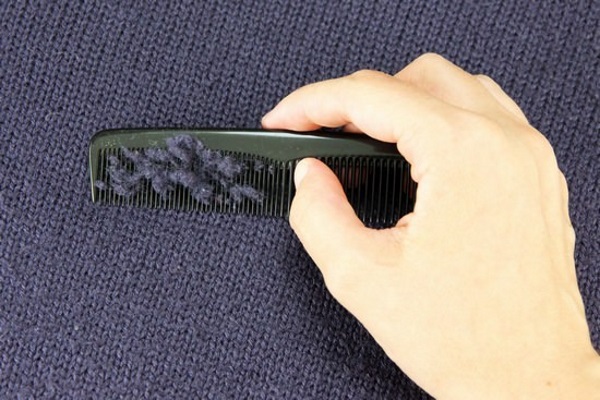
How to get rid of pellets on clothes (basic rules):
- All manipulations must be performed with increased accuracy and care, especially when working with nail scissors, razors or razors. One wrong move can ruin a thing forever.
- When cleaning the surface, follow the sequence and gradualness so that there are no untreated areas left.
- For convenience, the item is laid out on an ironing board or other accessible smooth surface.
- In order to qualitatively process the surface of the product and miss nothing, good, comfortable lighting for the eyes is installed at the place of work.
Razor
It is not recommended to use a razor blade or razor to clean too thin, loose, grainy fabrics or cashmere items. This method is only suitable for cleaning non-embossed woollens. Even a dull or safety razor can easily damage the fibers.
The fabric is laid out on a flat surface, for example, an ironing board, pulled and fixed. The product is gently shaved, moving in one direction, then the direction of the shaver is changed by 90 °.
Scissors
An ineffective way to remove fibers that have rolled up on the surface of the fabric. It is not recommended to cut the pellets from thin tissues, it is very likely that after the procedure, microscopic damage will remain on the fibers, which are not visible to the eye, which will subsequently turn into holes.
Scotch tape
Matted pile can be easily and safely refurbished using a wide strip of adhesive tape. The wide sticky tape is good for tackling small loose lumps. A strip of tape of a convenient length is applied to the fabric and passed over it by hand. With a sharp movement, the strip is torn off.
Toothbrush
If the balls are few and small enough, they can be easily removed by brushing the fabric with a toothbrush. Instead of a brush, it is permissible to use a new dishwashing sponge: if the sponge is two-part, a coarser texture is used to comb out the pellets. Comb the fabric along the grain.
Fine-grained sandpaper
The method is only suitable for lint-free fabric. For convenience during manipulations, sandpaper is glued to a small wooden block. The fabric stretched on a flat surface is straightened and fixed, smoothing out the folds. Sandpaper smoothly move in one direction, combing the fabric.
Rusks
A piece of hard (not loose) bread 1-2 cm thick is cut off and sent to dry in the oven. A hard biscuit is smoothly carried over the surface of the fabric, moving in one direction.
Pilling machine
Schweiler is one of the best ways to solve this problem: thanks to the adjustment of the cutting height of the fibers, the machine can be used for processing a wide variety of fabric surfaces.
When choosing an apparatus for removing rolled fibers, pay attention to the following characteristics:
- Device appearance: cheap cars are assembled handicraft, blades and a work surface with holes resemble thin foil, the plastic case is not made of high quality.
- Ease of use: the device should fit easily in your hand without weighing it down.
- Lint container capacity: preference is given to a small container, the volume of which will be enough for cleaning 1-2 items.
High-quality electrical appliances are powered from the mains and / or from batteries. The shipper must be equipped with a cutting height adjuster. Significant disadvantages of low-quality devices are considered to be fast overheating during operation and a short service life of the knives.
How to get rid of pellets on clothes using a typewriter:
- The device is connected to the network or working batteries are inserted into it and the switch is turned into the operating position.
- Problematic tissue areas are treated with smooth circular movements.
- After processing is complete, turn off the clipper and clean the fiber collection tank.
- At the final stage, the fabric is combed with a brush.
Adhesive tape roller
For convenience, you can purchase a reusable sticky roller at any hardware store. The roller is not suitable for removing large lumps from woolen and knitwear, as well as small frequent lumps formed on synthetic surfaces.
A roller with adhesive tape is the best choice when the question is not only about how to get rid of small pellets in prominent places of clothing, but also about an easy way to clean the product from small debris and dust.
Comb
The method is suitable for knitted items, but it is not effective for the complete removal of pellets from other fabrics. The pile is gently combed with a comb with densely spaced teeth, moving in one direction. To cut off fluffy lumps, use nail scissors.
Pilling prevention
Before buying clothes, be sure to read the instructions for use and care of the thing. In this regard, you can get additional advice from the seller or on the website of the manufacturer of the products.
It is important to follow the rules of wearing: some delicate sweaters, dresses and sweaters are not recommended to be worn under outerwear. Care instructions include cleaning, washing and drying the garment. If the label is labeled "hand wash" or "dry cleaning", these recommendations should not be neglected.
If the fabric contains a lot of artificial fiber, and the fibers themselves form a loose structure, it will not be possible to completely get rid of rolling. Even if preference is given to an expensive product with high-quality fabric, but with weakly twisted fibers, in the near future such fabric will be covered with small balls.
It is not recommended to buy clothes made of polyester: you should pay attention to the inner tag - if polyester makes up more than 5-10% of the main composition of the fibers, such fabric will not have a presentable appearance for long. The same rule applies to products made of lavsan, polyamide and nylon.
Fabrics with frequent pilling
- Wool and knitwear with added synthetic fibers: balls appear very quickly on such products. After several washes and short wear, the appearance of the product leaves much to be desired. Woolen fabrics roll only at the initial stage of wear. Expensive varieties of wool that are used for sewing men's suits are generally not prone to rolling.
- Fabrics with very fine artificial texture (curtains, underwear) are prone to hard balls.
- Cotton - a dense woven material made from natural fibers that is not subject to pilling, but its cheaper analogue "polycotton", which has recently been used for sewing bed linen, rolls down very quickly and loses its appearance.
- Polycotton Is a cheap fabric that is a blend of cotton and polyester. It can be recognized by the “Cotton 100%” label.
The fabric should contain a minimum amount of man-made fibers. Of the synthesized materials, compositions with the addition of acrylic are least of all rolled. Loose knitwear is very susceptible to pilling. It is better to give preference to the densest knitwear possible.
It is not recommended to rub or twist knitted clothes during hand washing - this will prevent the surface from rolling.
A simple principle will help to restore the appearance of the product: do not wait for a large number of spools to make the item unwearable. As soon as the fluffy balls appear on the surface (usually along the seams and in places of greatest friction), you should immediately use one of the above methods to remove them.
Despite the abundance of funds and recommendations on how to get rid of the pellets that appear on the surface of clothes, it is much easier to choose high-quality fabric for sewing. Preventing the pilling of the fabric will help the neat wear and delicate washing of the product, as well as adherence to the rules for using the fabric indicated by the manufacturer on the label.
Author: Svetlana Darenko
Helpful Videos on Different Ways to Remove Pilling from Clothes
5 ways to get rid of pellets on your clothes:
Lump Remover Review:

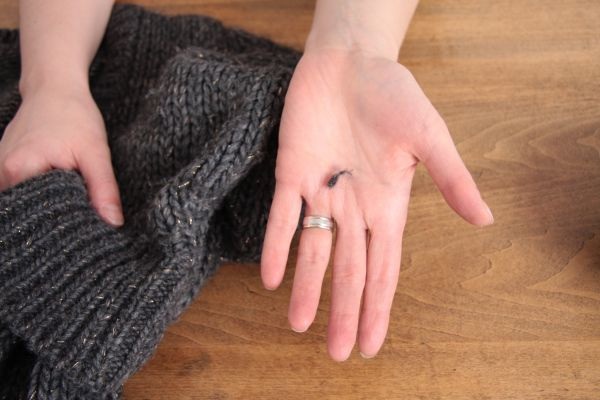
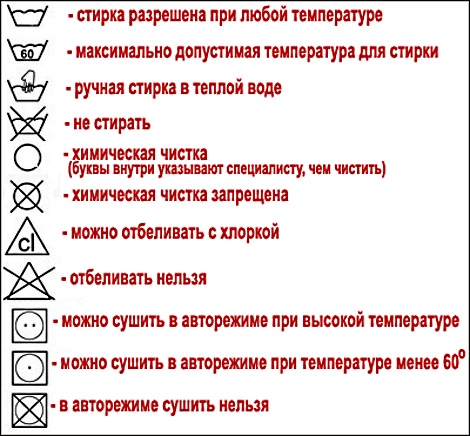
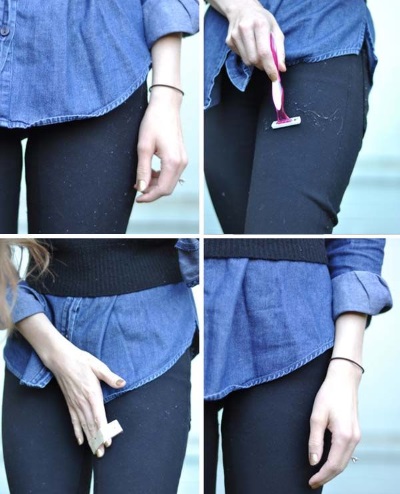

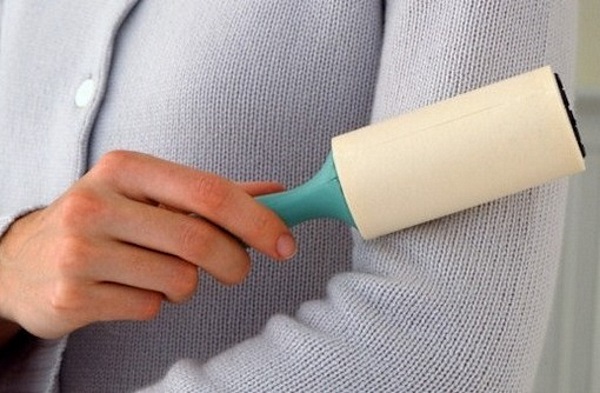
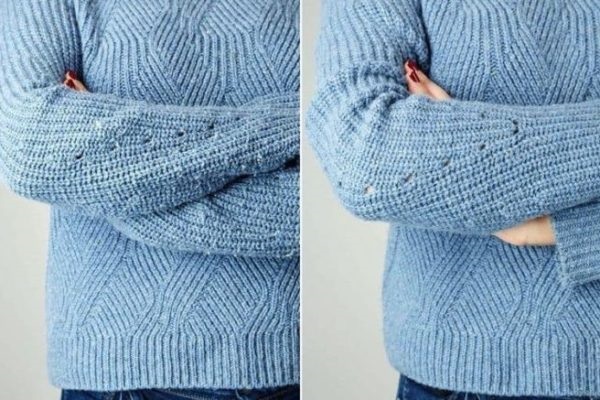
My acrylic sweaters are slipping so badly !! I save myself with a typewriter, as it is extremely unpleasant to wear them with spools. I bought it in a sewing store, it has been working for more than a year!